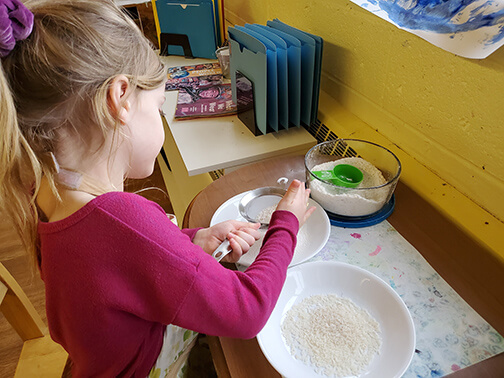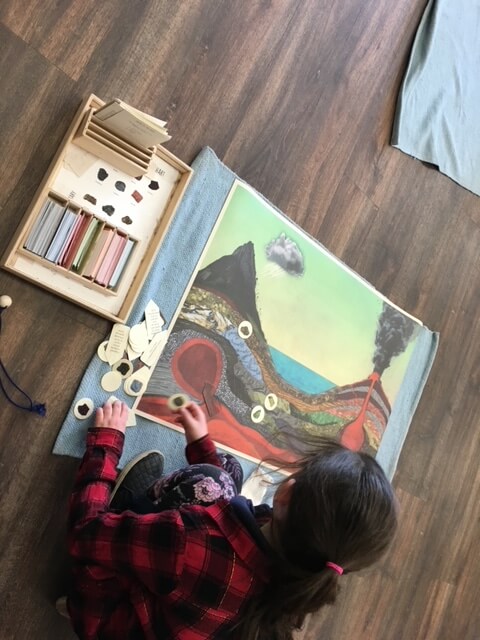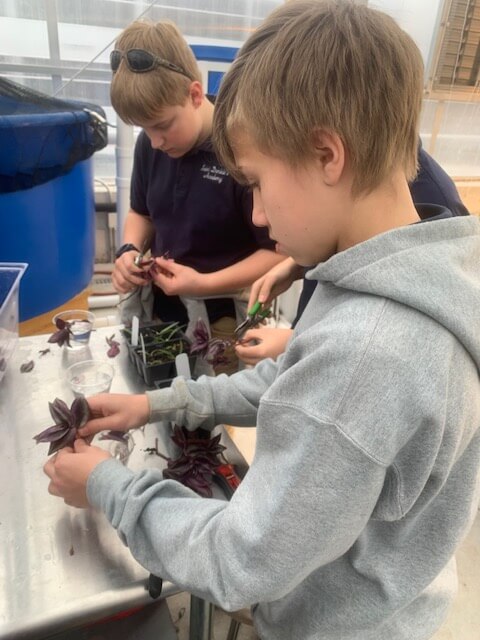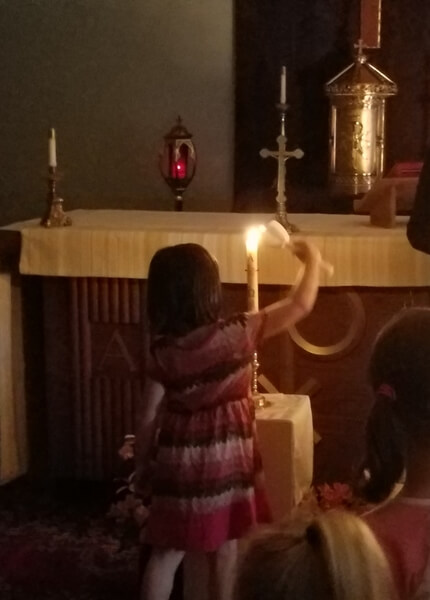

 (570) 253-6254
(570) 253-6254 Saint Dominic’s Academy
Saint Dominic’s Academy 
The Primary aged children (ages 3-6)... learn best through real-life activities that support independence and self-efficacy; manipulation of objects to provide concrete sensorial experience; and open-ended exploration leading to the refinement of their movements, sensory perceptions, language and the development of their intellect. Materials and activities are designed to support self-directed discovery and learning, and so are a perfect match for this developmental stage. (Montessori-AMI.org)

Elementary aged children (ages 6-12) typically can be characterized by their curious minds, their ability to abstract and imagine, their moral and social orientation and their energy for research and exploration. Elementary children work in small, mixed-age groups on a variety of projects which spark the imagination, engage the intellect, and develop their reasoning abilities. (Montessori-AMI.org)

The 7/8 classroom is intended to be a bridge between the learning style of the Montessori classroom and the styles of most high schools the students will attend. Montessori elements of concrete work and research remain while the students pursue classical topics in a more traditional classroom setting.

St. Dominic's implements the Catechesis of the Good Shepherd for religious formation at every age. This is a Montessori-based catechetical experience that acknowledges and seeks to support the child's relationship with God. The religious values of childhood--values of contemplation and enjoyment of God--are fostered. This experience is shared in a place particularly prepared for the religious life of children called the Atrium.